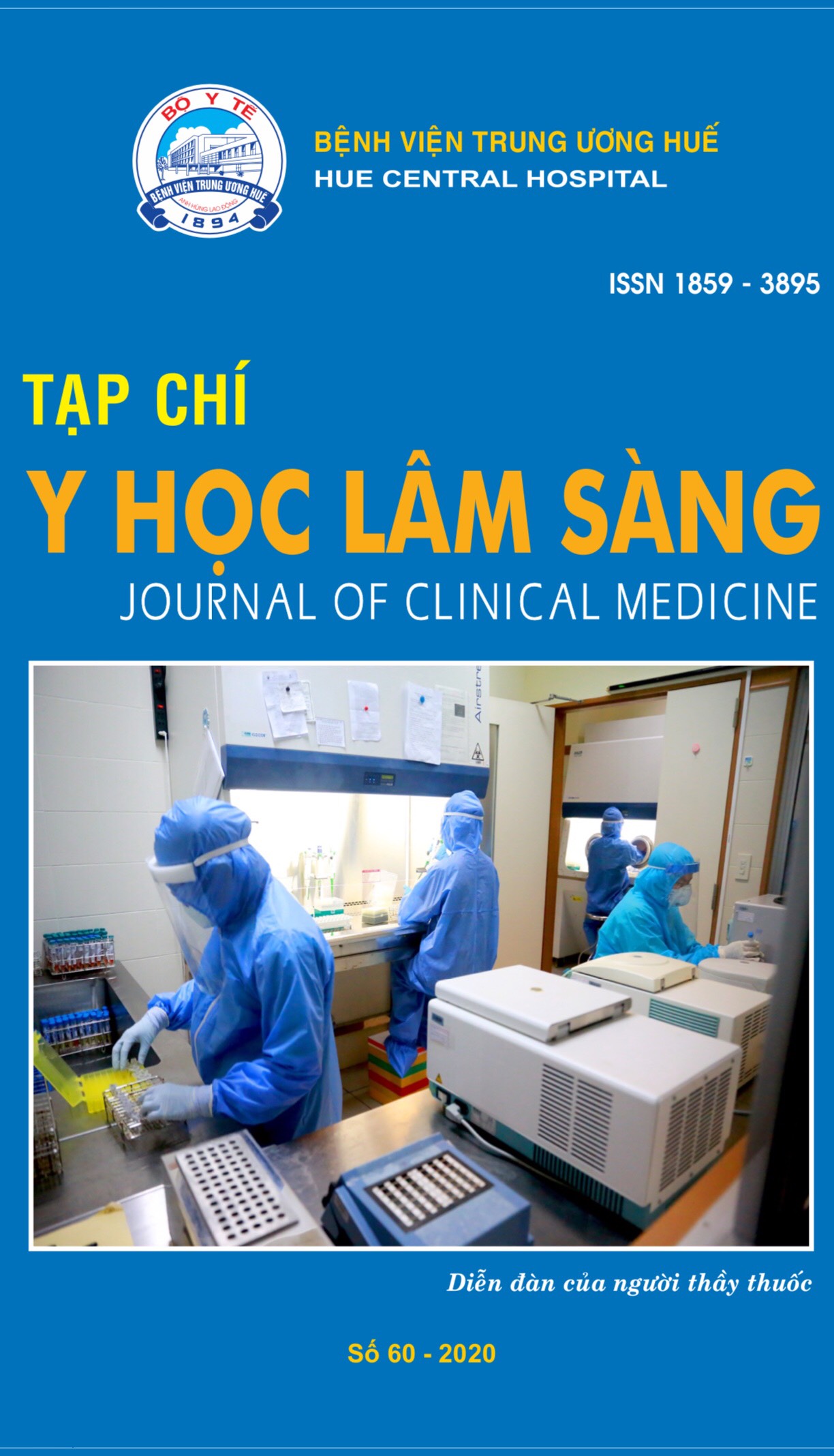Abstract
ackground: Currently, in addition to the advancement of surgical and anesthesia techniques has relieved the risks of surgery, however, the surgical site infections remains a challenge for both patients and physicians. Surgical site infections is unwanted medical incident that increasing aggravate illness, prolonged hospitalization and increased mortality in surgical patients.
Objectives: 1. Identify the rate of surgical site infections and a few of the characteristics of surgical site infections.; 2. Determines related factors and bacteria causing surgical site infections in Orthopaedic Trauma Center of Hue Central Hospital. Subjects and Methods: A cross-sectional descriptive study. Hospitalized patients, post- operative 48 hours, from 3- 7/2019.
Results: The rate of surgical site infections was 5.4%. The rate of SSIs in contaminated surgery was highest (22.0%) compared with other types. The rate of SSIs in open surgery and laparoscopic surgery, surgery with drainage had the rate of SSIs higher that not set. Patients with emergency surgery or plan surgery, methods of anesthesia had not the rate of SSIs in difference. The characteristics of SSI are usually fluid stagnant 47.0%, pus stagnant 31.4%. The ways to deal with this problem is to change the dressing daily (52.9 and 84.0%), remove the fluid and pus 19.6%. Solutions used to wash the incision are 0.9% Sodium Chlorua and Iode / Betadine alcohol. In 51 cases of SSIs, there were 31 cases of positive bacteria by 60,8%. Bacteria identified most of S.aureus, accounted for 32,3%.
Conclusions: We found that the rate of surgical site infections in Orthopaedic Trauma Center of Hue Central Hospital of this study was low and the leading bacteria causing ISS was S.aureus.
References
Bộ Y tế (2012), “Hướng dẫn phòng ngừa nhiễm khuẩn vết mổ” theo QĐ 3671 QĐ- BYT.
Nguyễn Quốc Anh, Nguyễn Việt Hùng, Phạm Ngọc Trường (2012), “Tỷ lệ mới mắc và yếu tố
nguy cơ nhiễm khuẩn vết mổ tại một số bệnh viện của Việt Nam, 2009- 2010”, Y học Thực
hành (830) - số 7/2012.
Trần Đỗ Hùng, Dương Văn Hoanh (2013), “Nghiên cứu tình hình nhiễm khuẩn vết mổ và
các yếu tố liên quan ở bệnh nhân phẫu thuật tại khoa Ngoại, bệnh viện Đa khoa Trung ương Cần Thơ”, Y học Thực hành (869) - số 5/2013.
Nguyễn Việt Hùng, Kiều Chí Thành (2011), “Nghiên cứu nhiễm khuẩn vết mổ tại các khoa
ngoại, bệnh viện tỉnh Ninh Bình”, Y học Thực hành (759)-số 4/2011.
Nguyễn Việt Hùng, Trương Anh Thư, Nguyễn Quốc Anh (2002), “Hậu quả nhiễm khuẩn vết
mổ ở bệnh nhân phẫu thuật tại Bệnh viện Bạch Mai”, Y học Lâm sàng, số chuyên đề, tr 79-82.
Nguyễn Minh Ky, Nguyễn Đức Chính và cs (2017), “Đánh giá chăm sóc vết thương chấn thương phức tạp tại khoa phẫu thuật nhiễm khuẩn Bệnh viện Việt Đức”, Tạp chí Y học thảm họa và Bỏng- số 2/2017.
Lê Thị Anh Thư (2011), “Tình hình nhiễm khuẩn bệnh viện trên bệnh nhân phẫu thuật Ngoại Thần kinh”, Y học Thực hành (764) - số 5/2011.
Hội Kiểm soát Nhiễm khuẩn châu Á Thái Bình Dương (APSIC) 2018, “ Hướng dẫn của Apsic
về phòng ngừa nhiễm khuẩn vết mổ”, Tài liệu hướng dẫn, tr 20-21.
World Health Organization (2011), Report on the Burden of Endemic Health Care-Associated Infection Worldwide.
| Published | 08-01-2025 | |
| Fulltext |
|
|
| Language |
|
|
| Issue | No. 60 (2020) | |
| Section | Original article | |
| DOI | 10.38103/jcmhch.2020.60.9 | |
| Keywords | Nhiễm khuẩn vết mổ (NKVM), vi khuẩn, phẫu thuật surgical site infections (SSIs), bacteria, surgery |

This work is licensed under a Creative Commons Attribution-NonCommercial-NoDerivatives 4.0 International License.
Copyright (c) 2020 Journal of Clinical Medicine Hue Central Hospital

